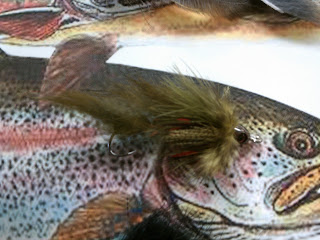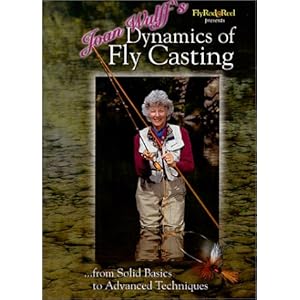You'll notice immediately the unfinished graphite look to these rods, part of Scott's overall commitment to quality. Sanding down the finish has the potential to create weak spots in the outside of the taper, weak spots you'll never notice until your rod folds in half during a trip. This unique look takes advantage of the natural luster of graphite, paying homage to the beauty of the materials.
They also feature an internal ferrule which you won't find in other rods of similar quality that creates a continuous flex and enhances the action. There are 12" and on some models, 20 " hash marks on the blank to offers a quick measurement for hero fish. The wraps are eye-pleasing. The action is sweet. Come on in and check 'em out!
Scott expands the core diameter of their rods and thins out the thickness of the walls to make the rods more stable and enhance the feel of the cast. They layer carbon reinforcement in the blanks to counteract the torque that causes casts to go awry. They very the modulus layup to precisely control the flex and recovery of the rods, making each of them load up and cast smoothly.
The Scott Difference, from their site:
At Scott, we’ve spent almost 40 years working to perfect the design, craftsmanship, and performance of fly rods. Along this journey, we’ve developed a way of doing things that we call The Scott Difference.
It’s focused on handcrafting every rod we sell. It’s driven by our love of the sport, the places it takes us, and the people we meet along the way. It’s about striving to make the ultimate fishing tools. Tools perfectly suited to their fishing applications.
We live it every day in the shop, cutting precise patterns from custom made graphite materials, carefully creating cork grips, and lovingly wrapping each guide by hand.
Most of all, the Scott Difference is about the people. The people who handcraft exceptional fly rods, the people who fish them, and the people who believe there’s a better way to do things.
G2 - "Medium Fast" Flex Profile, "Faster" recovery speed
The updated edition of the Scott G-Series, Brita's favorite rod in the history of all fishing ever! This one has a the similar sweet action and even more backbone. Tiny flies, light leaders, long tippets and big trout. A great stick for Rocky Ford, solo missions to Crab Creek, and your finesse stick for tiny BWOs on the Yakima or Callibaetis on Chopaka. Come cast the 9 ft. 5 weight.
A4 - "Medium Fast" Flex Profile, "Faster" recovery speed
Nymphs in the morning, dries in the afternoon, streamers at night - this is your all-around workhourse. Perfect for Lone, Pass, or chasing cutties at Richmond Beach and the Kitsap Peninsual. We've got 4, 5, and 6 weight rods.
F2 - "Full Flex" profiles, "Medium Fast" recovery speed
Fiberglass flex gets you in the right state of mind. Forks of the Snoqualmie, Teanaway, upper S-river tribs.
T3h - "Fast" flex profile, "Fastest" recovery speed
Skagit casts, T-17, nasty intruders and laser loops. This is your go-to stick when Puget Sound is pushing chromers into our local systems in January. We've got the 12' 8" 8 weight ready to swing confidence bugs.
L2h - "Medium-fast" flex profile, "Faster" recovery speed
Perfect entry-level rod, suited to switching out Scandi, Skagit heads for our Northwest waters. Cast the 12' 6" 7 weight and see what you think.
Custom shop: Choose your favorite Scott blanks and customize them with the fit, finish and components of your choice for one-of-a-kind heirloom quality. Choose grip shape, reel seat, guides, wrap colors and inscription and Scott handcrafts the rod to your specifications
Rods in stock!
| Model Code | Line Weight | Length | Weight in Oz. | Price |
| G2 905/4 | 5 | 9' 0" | 2.9 | $745 |
| A4 905/4W | 5 | 9' 0" | 3.3 | $425 |
| A4 854/4 | 4 | 8' 6" | 3.1 | $395 |
| A4 956/4 | 6 | 9' 6" | 4.4 | $395 |
| F2 703/3 | 3 | 7' 0" | 1.9 | $645 |
| T3h 1288/4 | 8 | 12' 8" | 8.8 | $995 |
| L2h 1257/4 | 7 | 12' 6" | 8 | $645 |


































